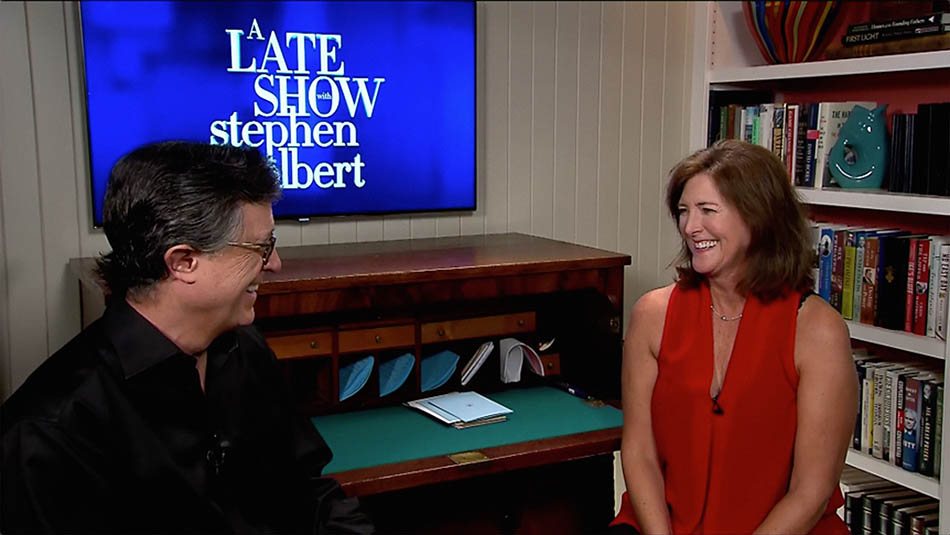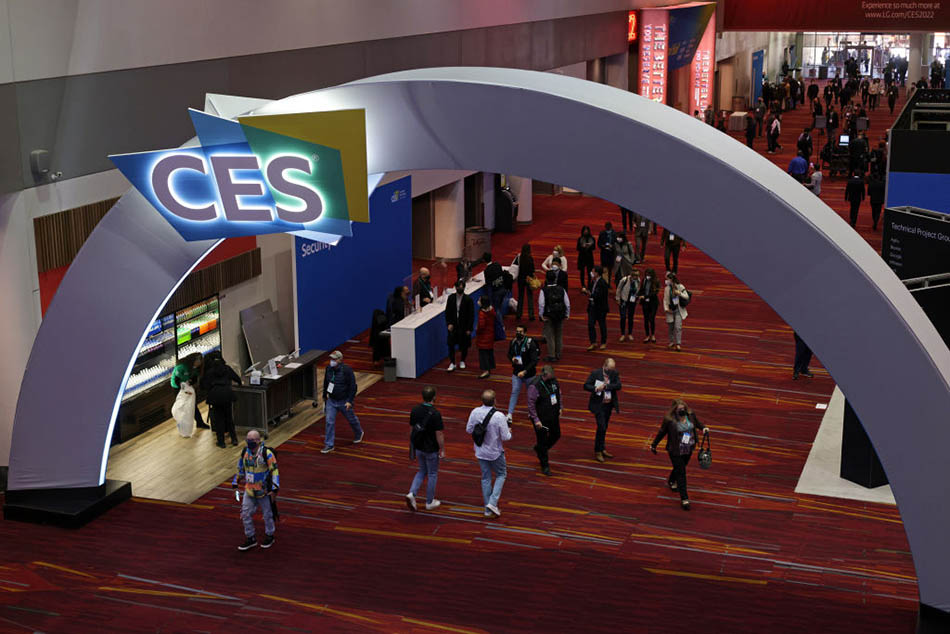How the Pandemic Has Permanently Changed TV
In many ways those changes are for the better, TV executives say

Almost two years into the global pandemic, TV executives are finding there are many things that have changed permanently as a result of viewers’ altered habits and the need to do business differently. And some of those things are actually good for the overall business of television.
One thing the pandemic has changed, at least for now, is the ability to hold live events. In January, just as CES, NATPE Miami, the Sundance Film Festival and the Grammy Awards were preparing to go forward, omicron had other plans. CES was still held in Las Vegas, with 75% less attendance than before COVID, but Sundance went virtual, the Grammys were postponed to April and moved to Las Vegas and NATPE was canceled at nearly the last minute. In lieu of being able to attend the programming conference in Miami, Next TV talked to several executives who had planned to go about how the pandemic has affected their businesses.
The main throughline is that the pandemic exponentially accelerated many trends that were already percolating pre-COVID.
Chief among those is viewers’ whole-hearted conversion to streaming. While streaming was already coming on strong, with Disney Plus launching in the pre-pandemic month of November 2019, other services have launched in the past two years, rounding out the competitive environment. HBO Max, which got off to a rocky start in May 2020, now has a total of 73.8 million subscribers worldwide — up 13.1 million viewers year to year — when included with HBO. NBCUniversal debuted its streamer, Peacock, in April 2020 and just said last week that it had 9 million paid subscribers and a total of 24.5 million monthly active accounts. Discovery Plus finally launched domestically in January 2021 and had grown to 18.1 million subscribers as of July 2021. All of these services join pre-existing streaming offerings: Netflix, Amazon Prime Video and Apple TV Plus.
Concurrent to the switch to subscription video-on-demand (SVOD) services is the rise of advertising-supported VOD (AVOD) and free ad-supported streaming television (FAST).
Subscription Fatigue Sets In
“Specific to Tubi and to AVOD in general, obviously the pandemic has incurred a huge medical, health and safety cost,“ Tubi chief content officer Adam Lewinson said. “There are so many families who have been hurting throughout this pandemic and looking for ways to cut back. Subscription fatigue was already a trend pre-COVID. Cord-cutters were looking for ways to not subscribe to four, five, six SVODs that cost the same as cable. When you are in COVID, you’re home with more time to spend streaming. If you are also looking to cut back, you do a cost-benefit analysis. Tubi is 100% free, and that makes it more desirable than ever.”
To that end, year over year Fox-owned Tubi has seen triple-digit growth in revenue and in terms of viewership, Lewinson said.
Broadcasting & Cable Newsletter
The smarter way to stay on top of broadcasting and cable industry. Sign up below
Even pre-pandemic, viewers were cutting the cord to pay-TV services, putting a digital antenna on their roofs and keeping their broadband subscriptions to assemble their own, largely free, television services. Tubi and other FAST channels, such as Pluto TV and the Roku Channel, are part of that solution, as are so-called diginets, such as the Scripps-owned Katz networks — Bounce, Court TV, Court TV Mystery, Grit and Laff — that viewers can receive for free, via antenna, on TV stations’ digital subchannels.

“If you look at the history of television, it’s always been 85-90% free and ad-supported with 10-15% being the pay tier,” Lewinson said. “As trends have settled and AVOD has risen, companies like Tubi have built our businesses. The trend line has really reverted to the norm — people really prefer the free with advertising model. There’s a subset of viewers who look to bypass commercials at any cost and they will pay for it. But the vast majority of viewers prefer the ad-supported experience.”
Another advantage of these types of channels, which rely highly on studios’ library content, is that they are serving up nostalgia. Tubi alone has 35,000 titles in its library.
“Comfort TV has always been a part of TV viewing, and that had a profound impact during the pandemic,” Lewinson said. “If you are escaping pretty harsh reality, you don’t necessarily want to curl up with the next big SVOD show. People are turning to their own version of nostalgia. We’ve seen a tremendous spike in comfort-TV viewing.”
Along those lines, viewers find they don’t have to pay as much attention to comfort TV as they do to prestige SVOD shows, and many sometimes prefer that.
“Because AVOD is free, it’s guilt-free casual viewing,” said Kevin Beggs, chairman, Lionsgate Television. “It’s different from watching HBO Max or Netflix where you feel you don’t want to miss a beat because you are paying for it. It’s a fundamentally different viewing experience — lean in versus lean out.”
Concurrent to the trend of comfort TV is the trend of casual TV. In the first days of the pandemic, broadcasters, journalists and late-night hosts quickly had to pivot to broadcasting from their homes — whether that was Stephen Colbert doing shows from his bathtub or Jimmy Fallon hosting The Tonight Show from his kids’ attic playroom with his wife running the camera. Viewers got used to seeing local news anchors in their living rooms, and guests phoning in on Zoom with AirPods awkwardly sticking out of their ears.
While shows have been back in their studios since fall 2020, viewers’ expectation that they see all anchors sitting behind their desks in suits and ties or dresses has faded. If Rachel Maddow occasionally does a show from her cabin, no one is shocked.
“Consumers are used to it now,” Tegna VP, marketing Meredith Conte said. “I think the fourth wall has been permanently broken.”
Part of that is also the rise of social media, where everyone is building their personal brands on their own time, giving viewers the sense that they know their local anchors and favorite celebrities personally. When those same people return to the studio, viewers want to feel that same level of intimacy with them.
Remote Working: A New Normal
Remote working, a trend that had been evolving pre-pandemic and was suddenly everybody’s new norm in mid-March 2020, is also a trend that is here to stay. In television, that means far less business travel. Gone are the days when 50 people might fly in to watch a day of production, snacking on catered sandwiches while watching dailies on set. Now, all of that takes place on Zoom and nobody leaves their homes.
“That type of video village won’t come back,” Beggs said. “There was definitely a compulsion and pressure to travel to sets, but I think all of that is going to be drastically cut, never to be seen again. It’s all working without the obligatory set visits from studio or network executives and all the tech has met the moment.”
Like set visits, pitch meetings also have gone remote, Beggs said, and while that’s more efficient, it’s also less interesting.
“You really have to tap into some creativity to make them not boring, plus everyone’s attention span has shortened,” he said. “You can’t hold the attention of a room remotely in the same way you can in the room. And people are precisely on time, there’s very little small talk. People have these presentations booked back to back.”
The flip side of this is the money and time saved by people not having to commute or travel for work.
We cleared a two-hour weekend block in 99% of the country via Zoom.
— Byron Allen, Allen Media Group
For example, the syndication sales team at Byron Allen’s Allen Media Group/Entertainment Studios cleared two shows without ever getting on a plane. “We cleared a two-hour weekend block in 99% of the country via Zoom,” Allen said.
Even with all of the changes, Allen is ultimately optimistic about where the business is going.
Like other disruptive times in history, “the pandemic has created new businesses, such as Zoom or home-test kits. It will ultimately balance itself out. People will return to travel and to the movies. People need to get out of their houses and have social communal experiences.”
And the business was already headed in these directions, it just forced the conversion to new technologies and new ways of working that much quicker.
“The trend lines that started pre-pandemic, that’s really what we are facing now,” Lewinson said. “The face of television has permanently changed, the landscape is different than it was 10 years ago and that won’t change.” ■
Contributing editor Paige Albiniak has been covering the business of television for more than 25 years. She is a longtime contributor to Next TV, Broadcasting + Cable and Multichannel News. She concurrently serves as editorial director for The Global Entertainment Marketing Academy of Arts & Sciences (G.E.M.A.). She has written for such publications as TVNewsCheck, The New York Post, Variety, CBS Watch and more. Albiniak was B+C’s Los Angeles bureau chief from September 2002 to 2004, and an associate editor covering Congress and lobbying for the magazine in Washington, D.C., from January 1997 - September 2002.

